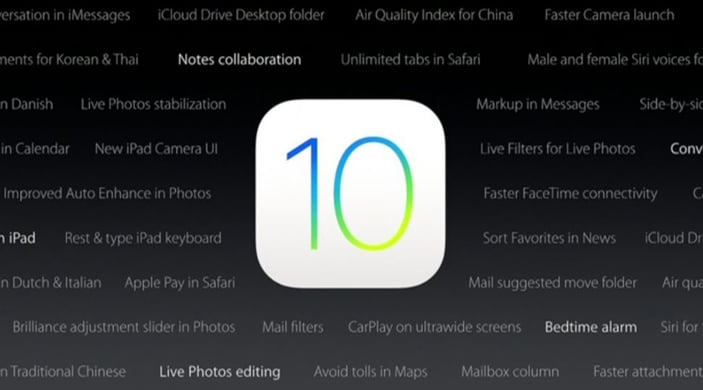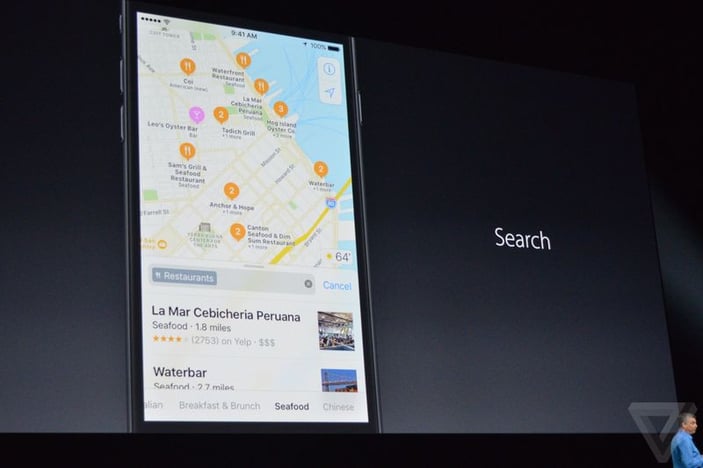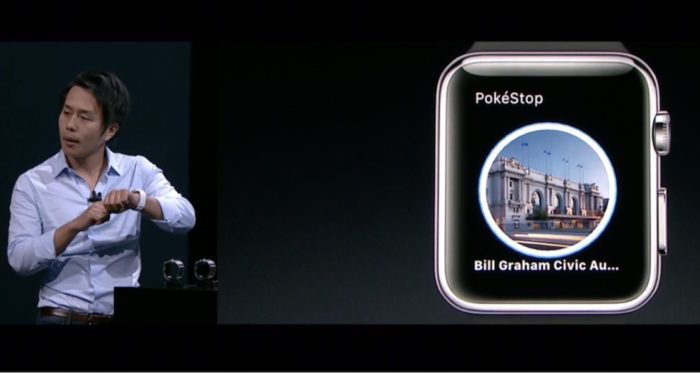Mila Hose | Sep 8, 2016 10:00:00 AM
5 Min Read

With the release of Apple’s iOS 10, brands will find that the new operating system is increasingly focused on location through artificial intelligence and machine learning. Google announced back in May that upcoming products would center on voice search and personal assistants that predict a user’s daily needs and allow them to focus on more important things. The focus on growing Siri’s ability shows that Apple is similarly focused, while perhaps differing with a heavier concentration on mobility as it relates to the local user experience.
With over 1 billion iPhones worldwide and the Apple Watch ranking second among all watch brands after only eight months of sales, the iPhone 7 will be released on September 9th, and enterprise marketers must focus on location more than ever.
Below are the four top ways iOS 10 is making local focal for marketers.
Voice Search and Contextual Prediction
Personal assistants are changing the way people perform local search queries, and Apple's new operating system will cater to consumer preferences and the mobile user experience. The iPhone 7 will feature an enhanced Siri that is capable of performing tasks within a user’s apps. Through machine learning and contextual prediction, users will now be able to book a ride, make a purchase or order food using only their voice. As the focus on voice search continues to increase, location-based marketers need to focus on optimizing for local keywords and nearby searches, accounting for the difference in phrasing between voice search and text-based searches.
Voice technologies, like Siri, have empowered users and raised their expectations of brands. From corporate level to the location level, brands need to utilize geographic data to present relevant, value-driven offers to consumers in their moment of need. Don’t wait for customers to find you; target them with geographically relevant content and offers in their immediate context. Local-mobile optimization has never been a more critical component of brand success.
Apple Maps
So much of the mobile user experience is directed by nearby searches and directional queries. That’s why one of the major updates of iOS 10 revolves around an Apple Maps upgrade. The Maps interface is receiving a new design, as well as the ability to make new location-based searches, or add a stop, on the way to a destination. Apple will also make use of contextual prediction through Maps by suggesting locations in the bottom half of a user’s screen. For example, if a it is 12PM on Tuesday, Apple may suggest a user’s favorite taco place, based on the user’s prior search history. 
Importantly, however, is the fact that Apple is opening Maps to developers, leaving no excuse for brands with inaccurate or inconsistent location data. The Apple Maps update offers location-based brands a huge opportunity to get out in front of users and become a weekly or even daily stop, but this means utilizing location data and geotargeting to create a unique and personalized experience that keeps customers coming back.
Geo-Aware Augmented Reality on the Apple Watch
Considering that the Pokémon Go app has now been downloaded over 500 million times since its release this summer, it is safe to assume that augmented reality is here to stay, giving local brands the opportunity to interact with consumers in a whole new way. The release of Pokémon Go has had many users obsessed with location, wandering about their cities and visiting stores that were never on their radar before 'pokestops' and 'Go gyms.' Now, with the release of iOS 10, Pokémon Go will be available on the Apple Watch. The app will notify users of nearby Pokémon or 'pokestops' via a light tap on the users’ wrist. Users will now be able to continually interact with their location-based augmented reality without ever having to look at their phones.
Marketers can capitalize on the Apple Watch and wearable technology in general by taking advantage of the location tracking in these devices. Wearable technology makes local advertising as simple as pushing a relevant ad to the user’s wearable device when a customer is within range of your location. Behavioral data and geographical data will also become more accurate and expansive, with users essentially wearing tracking devices everywhere they go, without ever disconnecting or going offline.
Apple Pay: The New Currency
The use of mobile payments is on the rise, and as user adoption increases, brands need to be ready to meet customer expectations. Apple is making its payment method as seamless as possible, integrating fingerprint authentication for security and creating a payment process that saves users from shuffling through a stack of cards or counting change in the checkout line. Apple Pay makes the online-to-offline experience quick and painless by allowing users to pay ahead and skip worrying over payment options in-store.
For multi-location brands that offer in-store pickup, self-checkout or delivery service, mobile payments work to create a smoother customer experience. Local marketers need to prepare for on-the-go customers whose only form of payment is a mobile device, and consider the potential business lost for being unable to accommodate them.
As people use mobile technology to interact with their immediate surroundings, location is at the center of everything we do. Apple’s new operating system demonstrates the importance of location for the technology of the future. With iOS 10, accurate and consistent local listings are critical for your brand’s success and a driving force in your brand’s potential to become part of consumers’ routines.
Find out if your brand and its location data are ready to withstand the strength of iOS 10 with Brandify’s free multi-location Quick Scan.
Topics: Apple, Wearables, Voice Search, Augmented Reality
Content writer @ Brandify.
Offer Post Justifications Spotted in Local Results
Oct 4, 2021 8:47:46 AM
Monday Memo: More than Brands and Influencers, Consumers Trust Each Other
Sep 27, 2021 7:56:34 AM
Monday Memo: Google Adds “Latino-Owned” to GMB Identity Attributes
Sep 20, 2021 7:58:58 AM
Monday Memo: New Study Shows 94% of Consumers Use Online Business Directories
Sep 13, 2021 7:16:55 AM
Monday Memo: The Page Experience Update Has Fully Rolled Out
Sep 6, 2021 7:43:45 AM